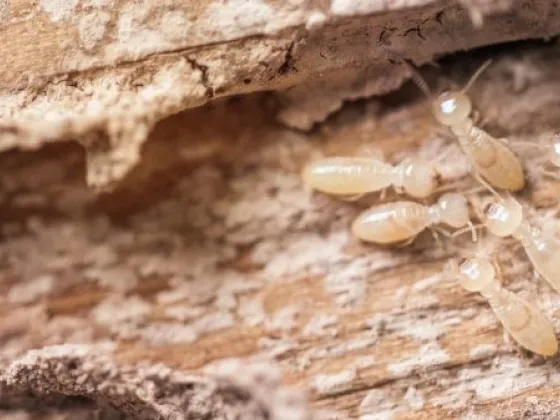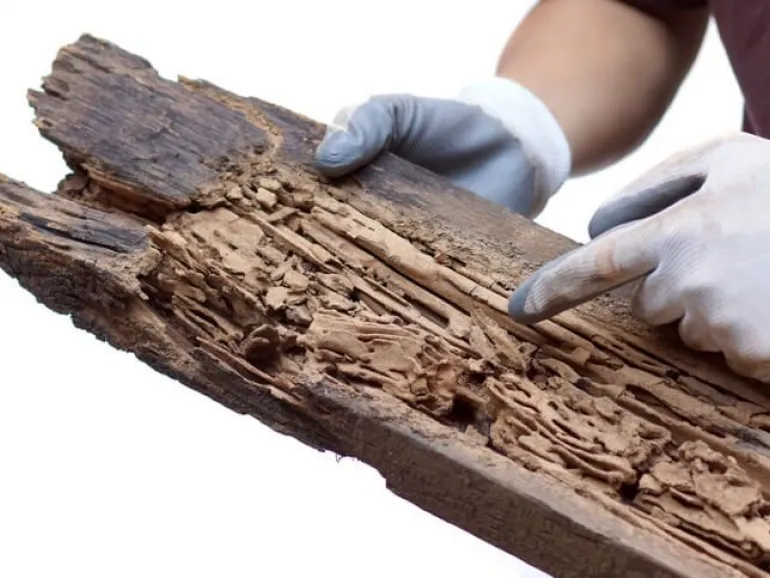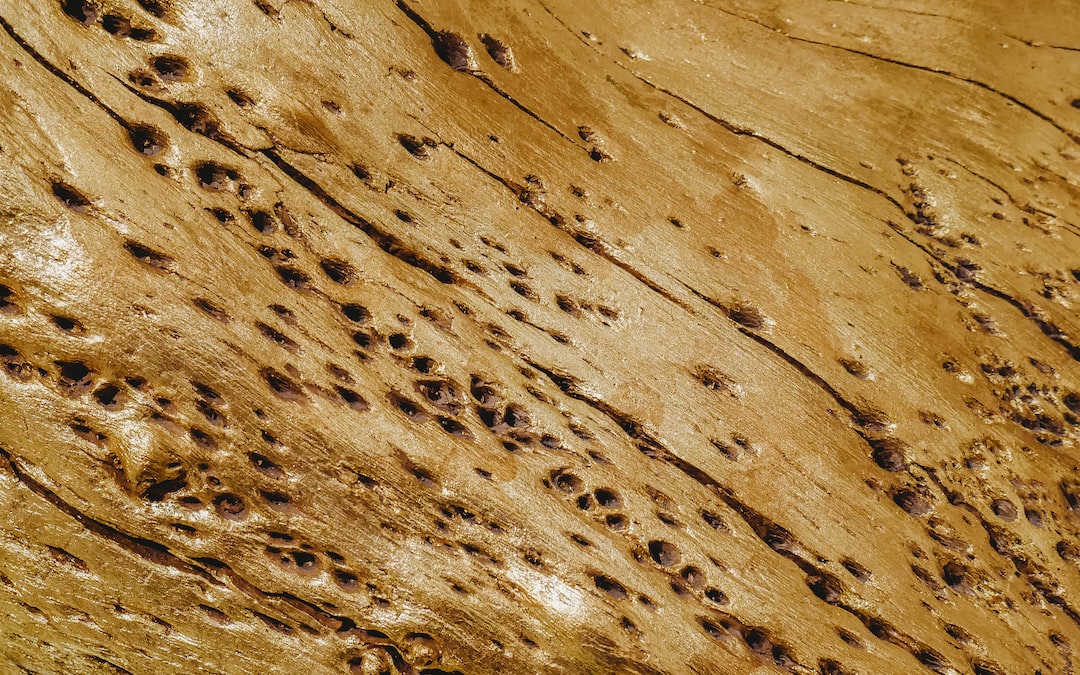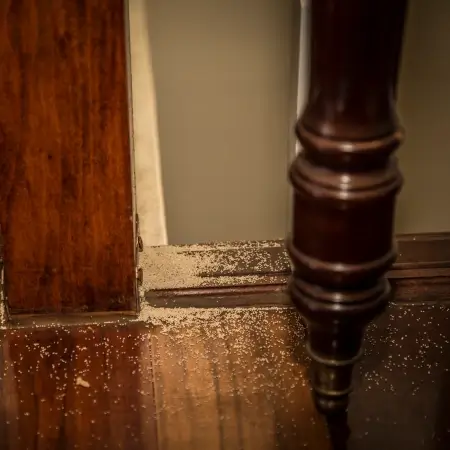6 Signs of Termite Infestation

Termites are said to be one of the most destructive pests in the world. In the United States alone, they cost about $30 billion in damages to man-made structures and crops.
At least 250 species of termites exist around the world, and not all of them pose potential dangers to your household items and furniture. But because those that can enter the homes can be destructive, you need to be aware of termite infestation signs.
Signs of termite infestation can be easy to recognize when you know what you are looking for. A thorough inspection of your home can reveal whether termites have been living inside your walls and will help determine the extent of an infestation.
Although some signs may be obvious in the event of an established infestation, other less obvious signs can only point to a problem after it has become serious.
Here's our list of common termite behaviors that indicate you could have an infestation:
1. Mud Tubes
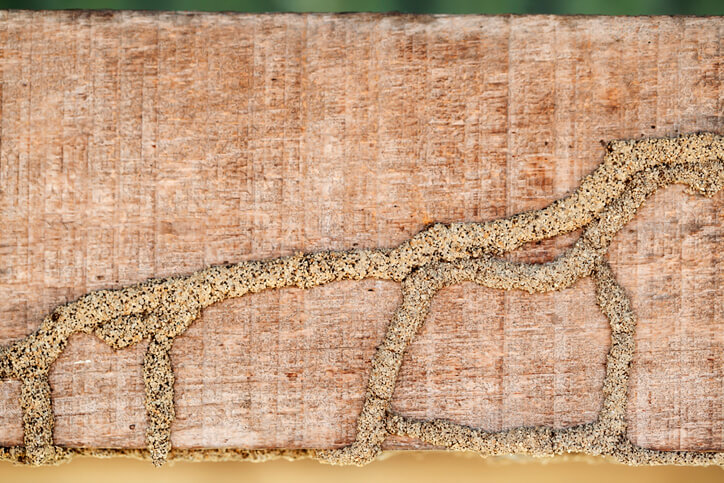
What are termite mud tubes? Termite mud tubes are a common sight in trees and on houses, especially in humid regions. However, they can be pretty disconcerting to see if you don't know what they are!
Tubes are about the width of an ant but much longer, maybe 30 to 40 centimeters long and 3 to 5 millimeters thick. They vary in color, depending on the termite species. For example, Tumulitermes tumuli is often brown while Mastotermes darwiniensis is grayish.
Mud tubes will usually go straight up tree trunks or house walls, following cracks or roughness, to enable them to cling securely in place. The top end of the tube will often be open. The bottom end is usually sealed.
Tubes usually have a central core of mud with termites crawling inside it, but they are sometimes constructed around other materials such as plant roots or twigs. They can be very conspicuous when seen against the sky from the ground, especially if there are a lot of them together, or if you use binoculars or a telescope to look at them!
There are several reasons why termites build these tubes.
- They provide shelter for workers and soldiers on the move between food sources (trees) and nesting sites underground.
- Although termites only grow a few millimeters long, the tunnels enable large numbers of individuals to move quickly around their nests without being easy prey to predators such as centipedes, spiders, scorpions, and birds.
- The termite mud tubes provide a point from which large numbers of workers can mount an attack on nearby enemies or rival nests.
All these functions are especially important during the vulnerable "swarming" and "emergence" stages in a termite's life cycle.
How do termites make these mud tubes? They pile soil against the sides to block off the ends and form a new nest inside. They build their mounds so that the wind direction is always away from the opening of one, even though it faces upwind.
This ensures that rainwater drains into one end of the mound, allowing the colony to survive in dry conditions even though they are otherwise vulnerable when rain exposes them to predators and competitors.
2. Swarmers
The termite swarmers are the reproductive form of the termite colony. They evidently look like winged ants and are often mistaken for such ants. Swarmers are usually smaller than ants, being about 4 millimeters long.
Termite wings are pale yellow to golden brown or dark brown in color while those of ants are generally black, with a three-segmented waist and elbowed antennae. Swarmers can be ejected from any part of the nest, and they immediately exit via nearby openings such as doors or windows.
Termite swarmers have a pair of strong transparent wings that resemble those of a dragonfly except that they lack an abdomen in between their thoracic parts. Both the wings are equal in length and look nearly transparent except for their dark-colored veins.
What are termite swarmers used for?
Termite swarmers are basically used to facilitate the process of dispersal and propagation of their colonies by flying out during a nuptial flight in search of a queen or king that they will procreate with. A new colony is then formed after mating when the female lays eggs, which eventually turns into insects known as pseudergates (non-worker initial stage). This completes the circle to repeat all over again.
The presence of winged individuals within any type of wood-destroying insect infestation is an indication that these bugs reproduce rapidly and quickly form new colonies. This implies that the infestation is spread and requires immediate attention.
Termite swarmers are often mistaken for ants, but they don't bite in spite of their occasional intrusions inside homes or buildings. As a first step to control or eradicate an ant infestation, it would be prudent to know whether those insects found in the house are really ants or not because treatment varies depending on the type of pest involved.
The presence of alates particularly during the summer months can be attributed to a high colony population. However, finding swarmers alone especially during mid-summer through winter months may only indicate that these insects have reproduced once again after mating, and it does not mean that there is an existing colony or a high population in the area.
3. Castes
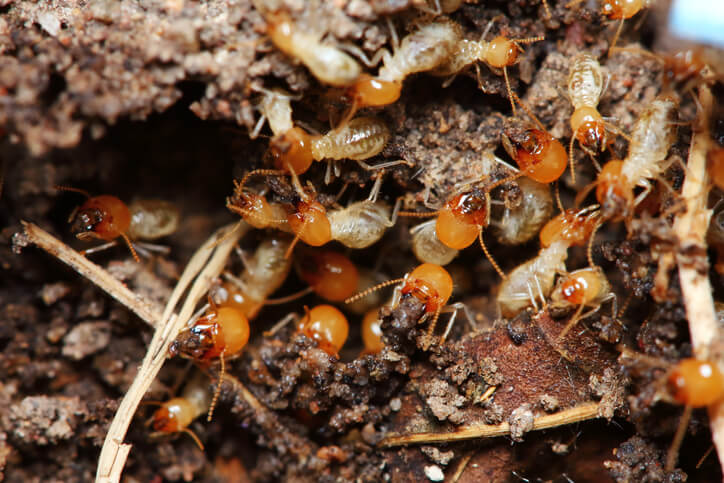
What are termite castes? Termite castes are the different types of individuals that make up a colony. There are three main termite castes: workers, soldiers, and reproductives. Possibly due to their social habits, there is always a constant presence of immature forms called nymphs. These immatures perform specific tasks to further the success of the colony.
What are termite workers? What do they look like? Worker termites can be differentiated by their flat rectangular-shaped head and long thin body shape. They have small brownish heads with large eyes, which enable them to see during both dark and light conditions. Their legs are specially adapted for tearing apart cellulose materials such as wood or leaves while creating tunnels and passageways.
Worker termites have a short lifespan of up to four years or less. They are constantly on the move, performing tasks such as excavating and feeding the other members of the colony until they die. Due to their small size and lack of wings, they don't travel far from where they were born (usually within 50 meters).
If there is a chance that the worker may not return, it will choose to stay near its birthplace to provide immediate care to its siblings. In this case, many termite workers can be found clustered together for protection against predators (and natural disasters). This means that they share similar life spans with each other when compared with the queen and the king.
Worker termites require a sugary substance to provide them with energy. They look for wood that contains cellulose and can digest this food by producing an enzyme in their gut (an organ found inside the body). This process is known as extracellular digestion. It breaks down the cellulose into glucose, which then enters the bloodstream of the worker. The worker houses this food in its crop (inside its head) where it is stored until needed by other members of the colony.
Workers themselves do not have mouths but rely on fluids from fungi or algae within their gut to assist in breaking down leaves and wood fibers, so they can be digested.
Worker termites are able to travel through the living quarters of a termite colony using the tunnels and passageways they build. They will also use their mouths to assist them in feeding if more space is needed (for example, passing food from one chamber to another).
The worker can be considered an engineer of sorts as it continually builds and repairs its surroundings with ease. After eating wood, it returns to its nest where saliva and feces are mixed together with soil or sand to form a plaster-like substance, which hardens quickly. This allows for walls, ceilings, and floors within a termite mound to remain sturdy over time.
Seeing just one swarmer might not mean there's an active infestation present. But if you see several swarmers and several castes (including winged reproductive males and females), this could indicate that an infestation has been occurring for some time within the structure.
Termites tend to fly directly out from their colonies when operating in swarms to find new potential locations for nesting. Therefore, seeing several winged insects at a time is likely indicative of a much larger issue.
4. Shed Wings
The discovery of a winged insect in the house is very often a termite. They are also responsible for many other household annoyances: termite wings on windows, doors, and screens; swarms of flying termites around lights at night ; and active colonies in the yard or nearby woods.
Usually, when someone finds a bug with wings in their home, they think it's an ant-lion larva. This is not surprising because these insects look alike: large heads, long legs, two pairs of wings with jagged ends. The main difference between them you can see only by looking closely at the wings: ant-lion larvae's wings have tiny "hooks" that help them grab prey, which they eat in their sandpit. The ant-lion larva is probably a male whose wings broke off while it was leaving its silken cocoon just before pupation.
Some other insects have the same problem with breaking wings. A cicada nymph (immature) that has not yet grown into its too-small shell may tear off its shed skin and nearby body parts.
All flying insects go through four stages in their life cycle: egg, larva, pupa, and adult (or imago). Winged termites are all females that developed from fertilized eggs.
After mating (usually within the colony), a special young queen has wings that fall off after she leaves the nest to start a new termite colony. Queens can live up to 30 years--long enough to found many colonies--but usually, they die before that time.
Males can't sting or bite, so their only role is reproduction. And because of this function, females don't eat them when they find them "decorating" one of the royal chambers. Instead, they pick up their bloated bodies and fly with them outside where other virgin males wait for such a "royal treat."
After insemination, she doesn't need her wings anymore. She abandons them, as well as the male, who will never be able to leave that spot. Then she starts her colony by building a royal chamber in which to lay eggs and feed the first nymphs. These nymphs are white unlike all other termites (whom they resemble), and they are fed until they turn into adults. The queen feeds them with "honeydew" (not honey!) that is produced from special glands on her body.
Termite colonies usually have many queens. If one of them dies--or for some reason leaves or abandons the nest--the others can take over and continue to produce offspring. This way, termites can survive any disaster--fire, flood, parasites, diseases--that would kill many other insects.
If you see shed wings around your home, it's likely that there are active termites nearby. A household cleaner sprayed onto any exposed wings will cause them to curl up, allowing you to later confirm whether or not the wings are related to termite activity.
5. Droppings
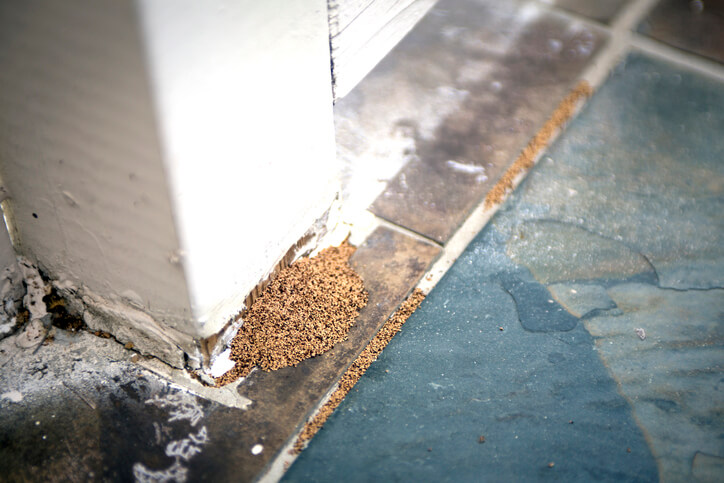
Termite droppings are often the only sign an inspector might find of a termite infestation. Droppings are the powdery, granular-type material discharged from mud tubes or tunnels formed by termites in wood. They resemble sawdust and can accumulate to considerable amounts if left undetected for any length of time. The presence of termite droppings, along with other indicators, is strong evidence that termites are present somewhere on your property.
Droppings may be found under floor coverings such as carpeting, tile, or linoleum. But you will probably have to break through the surface and dig down about 6 inches before finding them. You may also find them around wooden beams where they pass through partitions from one room to another, around plumbing in walls, and in spaces where metal meets wood or other materials.
Termite droppings will also accumulate wherever termites travel from one food source to another such as between double-wall construction joints or within wood-framing members at intersections. Even though some species of termites prefer damp conditions for survival (depending on when it is), many others can develop equally well whether their homes are wet or dry.
The droppings will be discharged near the mud tubes made up of soil, saliva, and termite excrement. The material is deposited from the rear end of all termites. When you find these granules, they're usually dried and have a flaky appearance that resembles cereal flakes, rice hulls, confectioners sugar, and even ground pepper.
Termite droppings may vary considerably in size, color, and texture depending on the species involved. They can range from 1/32 inch to as much as 1/4 inch long, are usually tan to dark brown but may contain black or red particles, and are usually in the shape of a cylinder but can be irregular. The color may vary from light to dark gray, and granules may even appear clear when dry.
Termite excrement is composed of chitin, which is similar to material found on the outside surface of insects that have hard outer covering such as beetles, grasshoppers, and fleas. Some people say that the best way to eliminate termites is with their poop! This material makes up about 15% of a termite's body weight, so it must contain important nutrients for them to survive.
Termite droppings will accumulate wherever they find moist wood or cellulose-based materials they feed upon so you'll likely find them in locations where termites have been able to gain access.
6. Damaged Wood
Termites can start to cause serious damage to wood in a relatively short period. If you spot any moist or darkened areas on wooden surfaces within your home (especially if accompanied by spongy-sounding material when pressed), this could be an early sign of termite activity beneath the surface.
Termites will often eat their way around a structure's wooden components until it feels like they can chew the material between their teeth. They are excellent at removing the filler from within your home and tend to target only the areas where there is dampness or moisture associated with timber.
If you see any wood shavings lying on your floor, this could be an indicator that termites have been feeding on timbers within the structure and are either preparing for (or have already begun) creating new nests elsewhere in your property.
Termites are some of the most damaging insects in the world. These pests can invade homes and structures, eating through wood and causing structural damage that is expensive to repair. If you spot these signs of termite infestation, it's important to take action right away by contacting a local pest control expert. Don't delay--call today!

